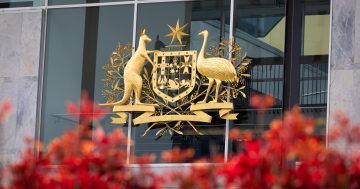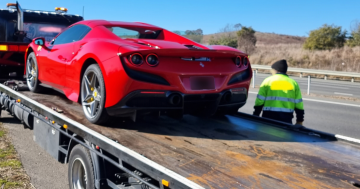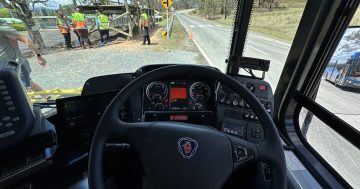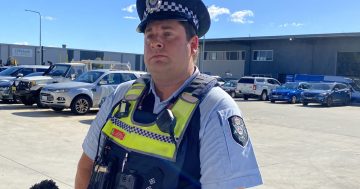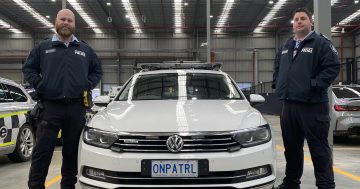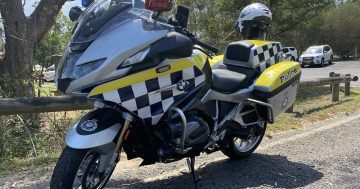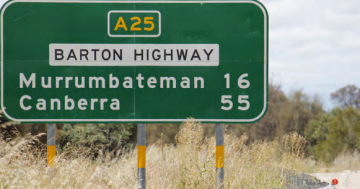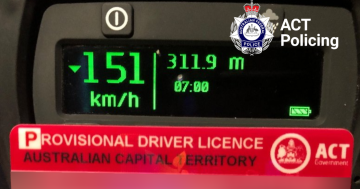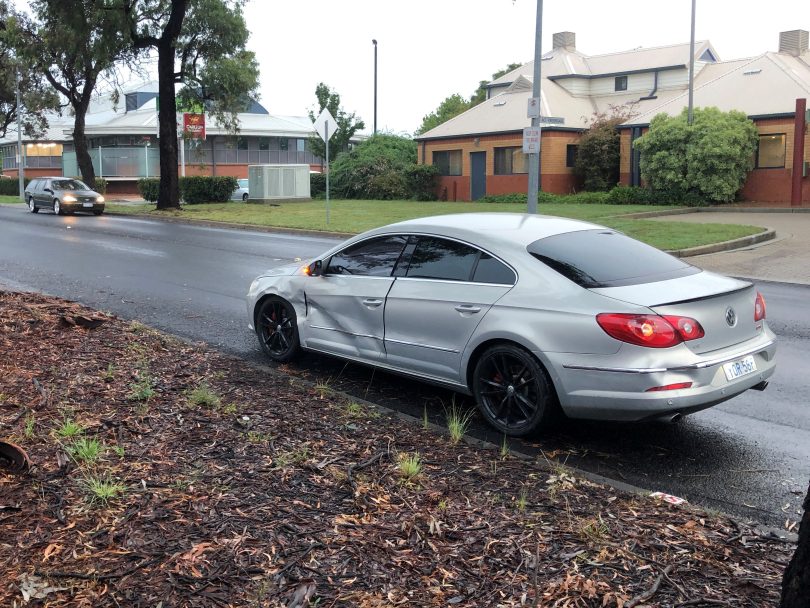
The results of a T-bone: a written-off car and a hyper-vigilant driver. Photo: James Coleman.
In September last year, the speed limit on Sutton Road was dropped from 100 km/h to 80, and in the last couple of weeks, the signs have been bowled over in protest. New signs are being installed and fingers are crossed these won’t suffer the same fate.
At about 11:45 pm on the night of 24 November 2018, a car speared into a tree along this road, killing both men inside.
At about 12:35 pm on 8 August 2019, a head-on collision occurred. Both vehicles caught fire and a man died at the scene. A woman was hospitalised.
This popular stretch between Queanbeyan and the Federal Highway has seen five fatalities and 17 injuries in the last seven years. Following a review of the situation and a comparison with the NSW Speed Zoning Guidelines, Transport for NSW has opted for the ‘speed kills’ fix.
This response holds that reducing speed reduces fatalities.
The good news is this will genuinely help. It has to – it’s basic physics. And it’s not like it will make your commute noticeably longer either. A government spokesperson has estimated the reduced speeds will add 90 seconds to the trip for the average driver, or the time it takes to walk into the office at the other end.
But it won’t fix the real problem, one that goes much further than Sutton Road.
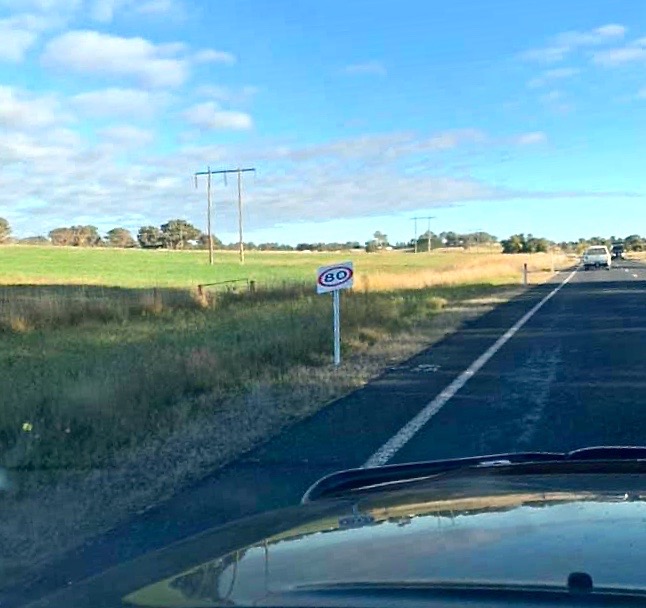
One of the many 80 km/h speed signs that have been knocked over on Sutton Road. Photo: Zac Hay.
My wife and I were involved in a T-bone accident last month. A ‘STOP’ sign marked the intersection, so the other driver obediently stopped and looked. I looked at him and registered that he had registered me. All was well until it wasn’t, and he plunged into the side of our car with that unforgettable crunch.
All of this unfolded below 30 km/h. All speed would have done is make it worse.
I’m sure you get where I’m going with this. Speed kills, but more to the point, inattention and carelessness and selfishness kills. I’m sure you also get that because it’s impossible to put a figure on these and they’re nearly as impossible to police.
But it always comes up whenever speed limits are discussed: how we should only consider raising speed limits if Learners and P-platers received better training, or if we were more like drivers in the UK and Europe who don’t jump queues or sit in the fast lane or breath down the necks of other cars.
To hold a Provisional driver’s licence in the ACT, you must be at least 17 years old, have held an ACT Learner licence for at least six months, and either passed a one-off assessment or been through the whole competency approach with an accredited driving instructor.
For those who hop into the driver’s seat whenever Dad needs something from Bunnings, this is pretty relaxed. And so for those getting their Ls after 1 January 2021, this was changed to include a logbook.
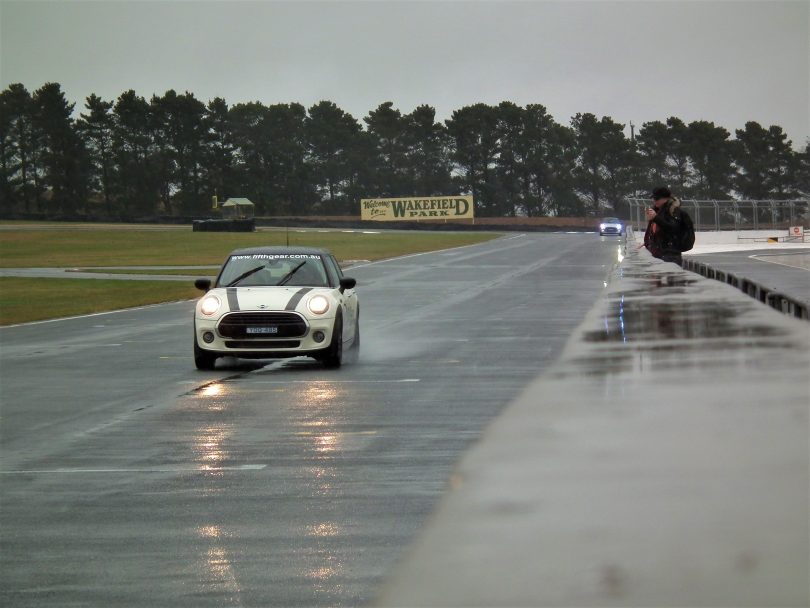
Driver training in progress at Wakefield Park race track, near Goulburn. Photo: James Coleman.
Now, drivers under 25 years of age are required to complete 100 supervised driving hours, including 10 at night, with drivers 25 years of age or older required to complete 50 supervised driving hours, including five at night.
Is this better? Maybe, but it still doesn’t address attitude. This is where the crash comes in, because I can confirm it definitely helps.
I’ve lost count of the number of intersections I’ve driven up to since that awful evening, my head popping out of the windscreen like a prairie dog’s, scouting for any possible dangers. Even though it wasn’t my fault, I like to think the experience has made me a better, more cautious, more observant driver.
However, for obvious reasons, the end doesn’t justify the means here. Crashing your car still isn’t recommended.
So do the opposite instead and book a spot in a defensive-driving course. Many companies offer these across the capital region, including just off Sutton Road at the Sutton Road Driver Training Centre. These usually start at about $250 for the day.
You’ll be safer; motorists around you will be safer.
Or here’s another one (I would say it’s cheaper but not sure it works out that way in the end): have a child. Nothing like precious cargo to have you acting like the owner of the proverbial china shop the bull got into.












